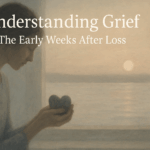
Grieving the loss of a loved one is an intensely personal and often debilitating experience. Traditional grief counseling (aff) and therapy methods, such as talk therapy and support groups, have long been the go-to solutions for managing grief. However, recent advancements in mental health treatment have introduced new, innovative therapies that show promise in providing relief for those struggling with intense grief. One such therapy is ketamine therapy, a treatment initially known for its use in anesthesia and now gaining traction as a potential intervention for mental health issues, including grief. This article delves into the science behind ketamine therapy for grief relief, exploring how it works, its benefits, and what grieving individuals should consider before opting for this treatment.
1. What is Ketamine Therapy?
Ketamine is a dissociative anesthetic that has been used in medical settings for over five decades, primarily for surgical anesthesia. In recent years, however, low doses of ketamine have been studied for their potential therapeutic effects on mental health conditions such as depression, post-traumatic stress disorder (PTSD), anxiety, and now, grief. Ketamine therapy for mental health typically involves administering ketamine intravenously (IV) or through a nasal spray in a controlled clinical environment. The aim is not to induce anesthesia but to leverage the unique properties of ketamine to alleviate symptoms of severe emotional distress.
2. How Does Ketamine Work in the Brain?
To understand how ketamine can help with grief relief, it’s essential to explore how it works in the brain. Ketamine primarily affects the brain’s glutamate system, a neurotransmitter that plays a crucial role in mood regulation, cognition, and emotional processing. Unlike traditional antidepressants that target serotonin or norepinephrine pathways, ketamine acts on the N-methyl-D-aspartate (NMDA) receptors, which are involved in glutamate transmission.
By blocking NMDA receptors, ketamine increases the availability of glutamate in the synaptic cleft, promoting the activation of another type of receptor called the alpha-amino-3-hydroxy-5-methyl-4-isoxazolepropionic acid (AMPA) receptor. This process triggers a cascade of events that leads to the release of brain-derived neurotrophic factor (BDNF), a protein that supports the growth and survival of neurons and enhances synaptic plasticity. This increased synaptic plasticity is thought to help the brain rewire itself, forming new neural connections that can improve mood and cognitive function.
3. Ketamine’s Impact on Grief-Related Depression
Grief and depression, while distinct, often overlap in symptoms, such as profound sadness, loss of interest in activities, fatigue, and difficulty concentrating. Traditional grief therapy focuses on processing emotions and adjusting to life without the deceased, but this can be a long and arduous process. Ketamine’s rapid antidepressant effects offer a potential advantage for individuals experiencing intense grief-related depression.
Research has shown that ketamine can produce rapid relief from depressive symptoms, sometimes within hours of administration. This fast-acting nature is particularly beneficial for those who are stuck in acute grief and unable to function or find motivation in daily activities. By lifting the heavy burden of grief-related depression, ketamine can provide individuals with the mental clarity and emotional strength needed to engage more effectively in traditional forms of grief therapy.
4. The Neurobiology of Grief: How Ketamine Fits In
Grief is not only an emotional response but also a neurological process. Studies have found that intense grief can alter brain function, particularly in areas associated with emotion regulation, memory, and reward processing, such as the amygdala, prefrontal cortex, and anterior cingulate cortex. These changes can lead to a heightened state of emotional pain, often described as ‘grief brain,’ where individuals feel stuck in a loop of negative thinking and intense longing for the deceased.
Ketamine’s ability to modulate glutamate transmission and enhance synaptic plasticity may help counteract these neurological changes. By promoting new neural connections, ketamine therapy may help “reset” the brain’s emotional circuits, reducing the intensity of grief-related emotions and providing a window of relief that can be leveraged in therapeutic settings.
5. Clinical Evidence Supporting Ketamine for Grief Relief
While the use of ketamine for grief specifically is a relatively new area of study, there is growing clinical evidence supporting its efficacy in related conditions. For example, a study published in the American Journal of Psychiatry found that ketamine was effective in reducing symptoms of treatment-resistant depression, a condition that shares many symptoms with prolonged grief disorder. Other studies have demonstrated ketamine’s effectiveness in reducing anxiety, PTSD symptoms, and suicidal ideation, all of which can be associated with intense grief.
Preliminary research suggests that ketamine may be particularly effective for individuals experiencing complicated grief, a condition characterized by prolonged and intense mourning that disrupts daily life. In such cases, ketamine therapy could potentially provide the rapid relief needed to break the cycle of unrelenting grief and facilitate engagement in other therapeutic modalities.

“While the studies are still in their infancy, many are turning to ketamine grief therapy as a means of going through the grieving process.”
6. The Ketamine Therapy Experience: What to Expect
Ketamine therapy is typically administered in a controlled medical setting, such as a clinic or hospital, under the supervision of a qualified healthcare provider. During the session, the patient receives a low dose of ketamine either through an IV drip or a nasal spray. The effects of ketamine are generally felt within minutes and can last for about 30 to 60 minutes.
Patients may experience a range of sensations during the session, including mild dissociation, visual or auditory hallucinations, and altered perceptions of time and space. These experiences are usually well-tolerated, and most patients find them to be more pleasant or neutral rather than distressing. After the session, patients are typically observed for a period to ensure their safety and stability before being discharged.
7. Potential Risks and Side Effects
Like any medical treatment, ketamine therapy is not without risks and side effects. Common side effects include dizziness, nausea, increased heart rate, and elevated blood pressure. In some cases, patients may experience more intense dissociative symptoms or hallucinations, which can be disorienting. However, these side effects are generally short-lived and resolve within a few hours.
There is also a potential risk of psychological dependence, particularly with repeated or prolonged use. It’s important for individuals considering ketamine therapy for grief to discuss their medical history and any potential risks with a qualified healthcare provider.
8. Is Ketamine Therapy Right for You?
Deciding whether ketamine therapy is the right choice for grief relief is a personal decision that should be made in consultation with a healthcare provider. Factors to consider include the severity and duration of grief symptoms, previous treatment history, and any underlying medical or psychological conditions. Ketamine therapy may be a viable option for individuals who have not found relief through traditional grief counseling or for those who require more immediate symptom management.
9. Integrating Ketamine Therapy with Traditional Grief Support
While ketamine therapy offers a promising new avenue for grief relief, it is not intended to replace traditional grief counseling or support. Instead, it should be viewed as a complementary approach that can enhance the effectiveness of other therapeutic interventions. For example, the mood-enhancing effects of ketamine may help individuals engage more fully in cognitive-behavioral therapy, support groups, or other grief counseling methods.
By combining ketamine therapy with traditional forms of support, grieving individuals can create a comprehensive and personalized approach to healing that addresses both the emotional and neurological aspects of grief.
Ketamine Therapy for Grief: A New Pathway to Healing
Ketamine therapy represents a novel and potentially transformative approach to managing grief. By targeting the brain’s glutamate system and enhancing synaptic plasticity, ketamine offers a unique mechanism of action that differs from traditional antidepressants and therapeutic interventions. For individuals experiencing intense or complicated grief, ketamine therapy may provide the rapid relief needed to break the cycle of emotional pain and begin the journey toward healing.
As research continues to explore the full potential of ketamine for grief relief, it is essential for individuals to make informed decisions in consultation with healthcare providers. For those struggling with the profound impact of loss, ketamine therapy may offer a new pathway to hope and recovery.














